Los Angeles has some of the most interesting land for golf anywhere in the country. Lucky for golf fans, the LPGA Tour schedule features two designs that show off that land on a yearly basis. Wilshire Country Club, a venue that has been on the calendar for a few years, is a stunning Norman MacBeth design that has been reworked by Kyle Phillips. With a variety of different bunkers and barranca, Wilshire infuses strategy into a subtle city site that is devoid of dramatic topography.
This week, the LPGA heads to Palos Verdes for the second edition of the DIO Implant LA Open. There, players will face a completely different test. The bunkers and creeks of Wilshire are replaced with uneven lies, undulating greens, and big elevation changes. Few cities in America offer such wildly different topographies so close together. It’s what makes the Los Angeles area one of the greatest canvases for golf.
Palos Verdes Golf Club was designed by William P. (Billy) Bell, who is best known for his construction work under the great George Thomas. Bell was on site every day for the building of Thomas’s three most famous courses: the North Course at Los Angeles Country Club, Riviera CC, and Bel-Air CC. Overshadowed by this trifecta are a handful of solo Billy Bell designs, like Palos Verdes.
Palos Verdes will captivate television viewers this week with its amazing setting. Sitting in the mountains above the Pacific Ocean, the course winds through canyons with expansive views of the ocean and Los Angeles. In addition to making the most of the views, Bell built a compelling course that will test the best women players’ abilities. Besides hitting shots off of uneven lies to targets that are uphill and downhill, just walking Palos Verdes for a week will be physically taxing.
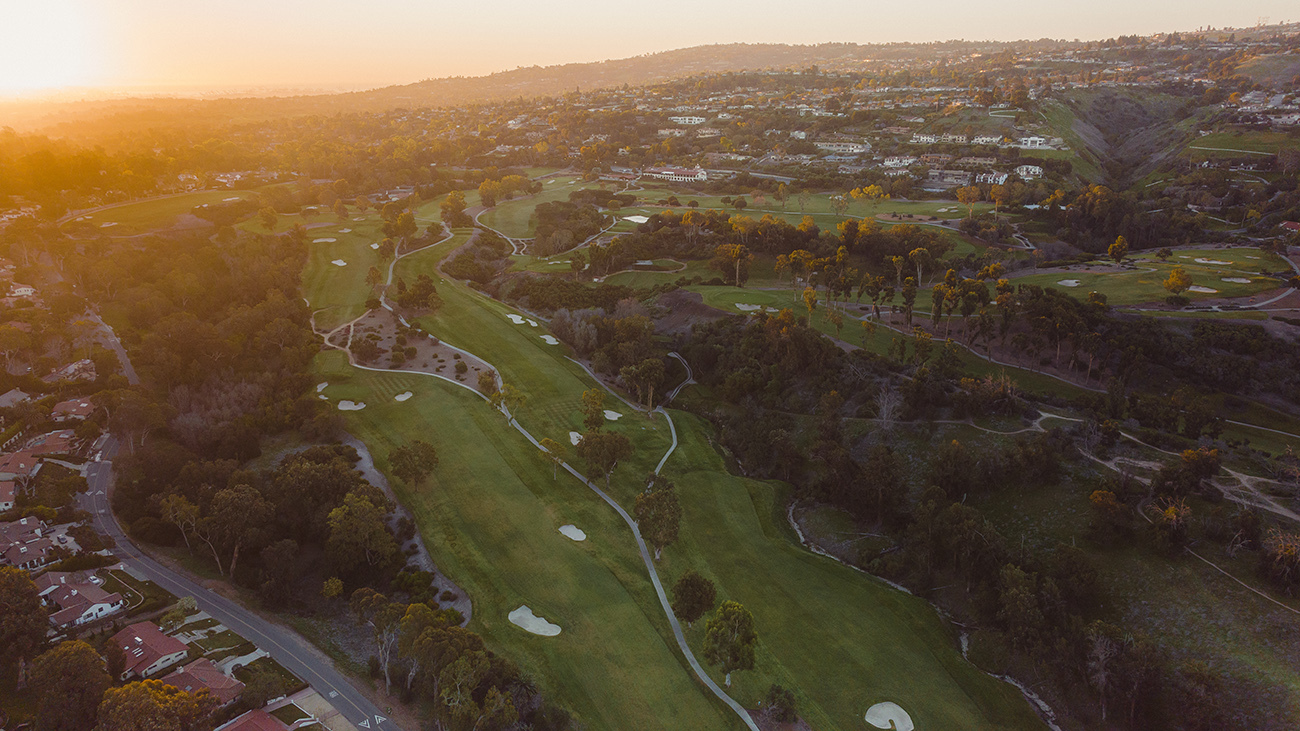
The front nine (for the LPGA event) at Palos Verdes travels up and down a canyon. Photo: Andy Johnson
With the nines flipped for the tournament, the holes that occupy the most severe land are the par-4 fourth, the par-5 seventh, the par-3 13th, and the par-5 14th.
No. 4 is a tremendous strategic hole, playing severely downhill and alongside a canyon. The closer to the canyon a shot ends up, the better the angle into this vexing green.
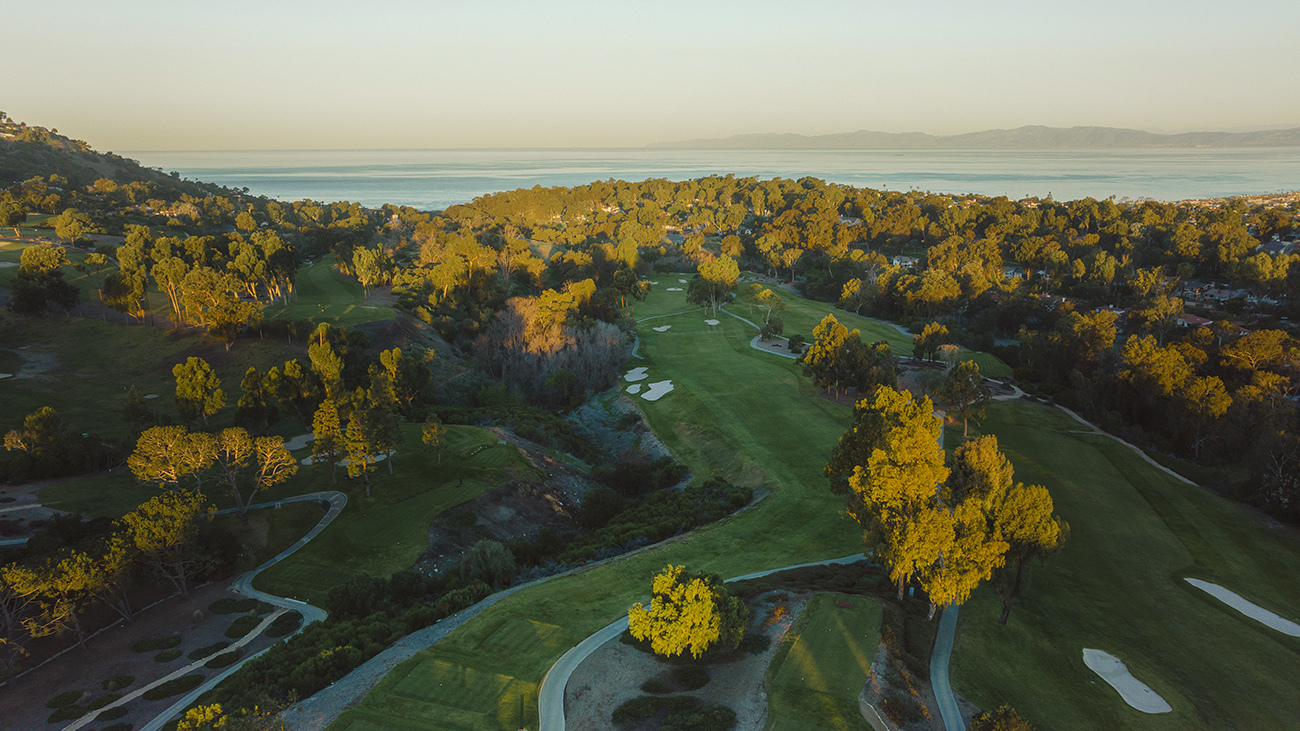
The fourth hole at Palos Verdes. Photo: Andy Johnson
The fourth green runs from front to back with the downhill slope and has a giant knob that cuts in from the right side. This is a hole you could play over and over and never quite master. It also moves golfers to the bottom of the canyon, where the fifth and sixth holes also sit.
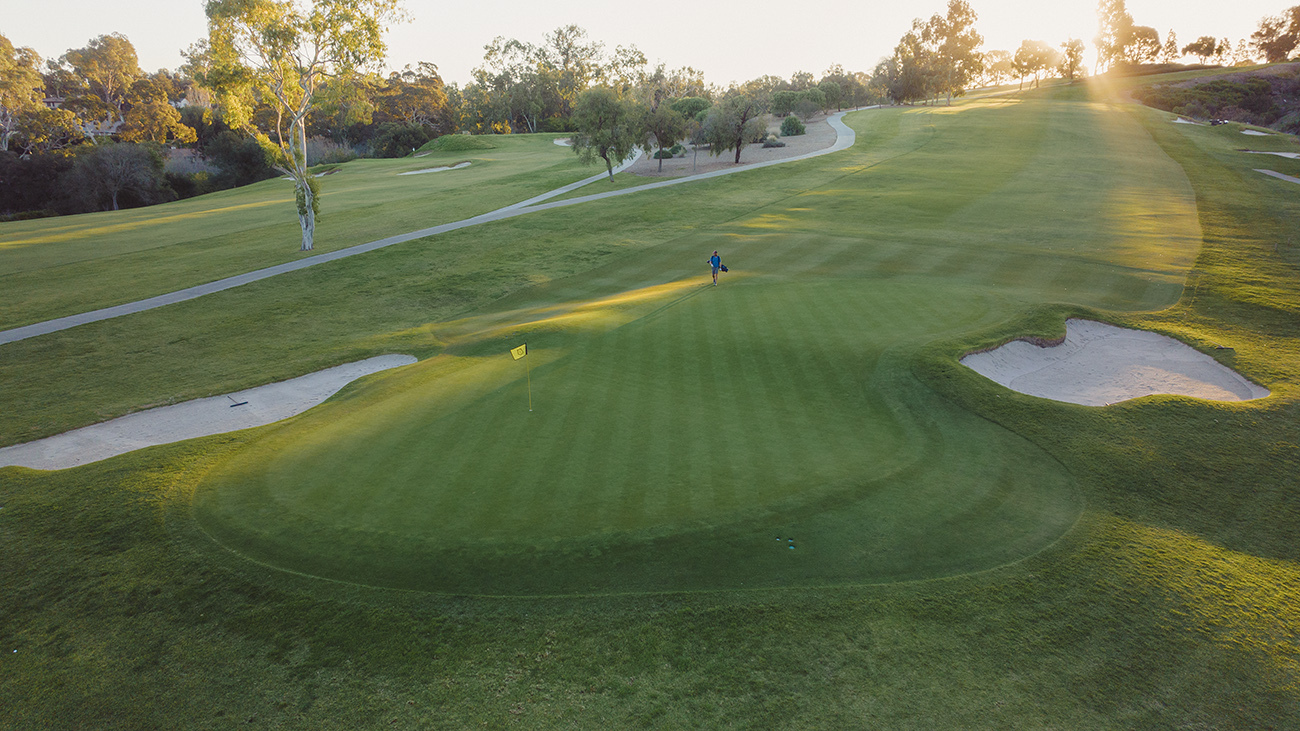
The fourth green at Palos Verdes. Photo: Andy Johnson
No. 7 brings you out of the canyon. If you walk and carry your bag, you will unmistakably feel the uphill climb in your legs. The club’s consulting architect Todd Eckenrode made a smart change to the hole, moving Bell’s original green to the left, flush against a canyon. This removed some safety issues while generating a strategic challenge. Bailing right of the green in two leaves a delicate, difficult chip shot. We should see a number of players find this area and have a wide variety of chip shots from it.
On the back nine (again, as designated for the LPGA event), you get the best views of the Pacific Ocean thanks to most of the nine sitting on the highest ground. Two holes make this nine possible—the 13th and 14th, which play down into a canyon and then back out.
The biggest elevation change on a single shot occurs at the par-3 13th, which plays dramatically downhill. Many architects use par 3s as a way to get out of corners and awkward spots on properties, and that is exactly what 13 does. The previous hole, a par 4, finishes at the very edge of the high ground, leaving only one way out: down. The 13th is a long par 3 but plays significantly shorter because of the severe elevation drop. Today, bunkers guard the front-right and left sides, with the canyon edge on the right of the green.
Originally, Bell designed this hole to be bunkerless. It would be great to see it return to that. Shorter hitters would be able to use the edge of the canyon to bounce balls into the green from the right, and misses to the left would tumble farther away from the target. The land is a sufficient hazard here.
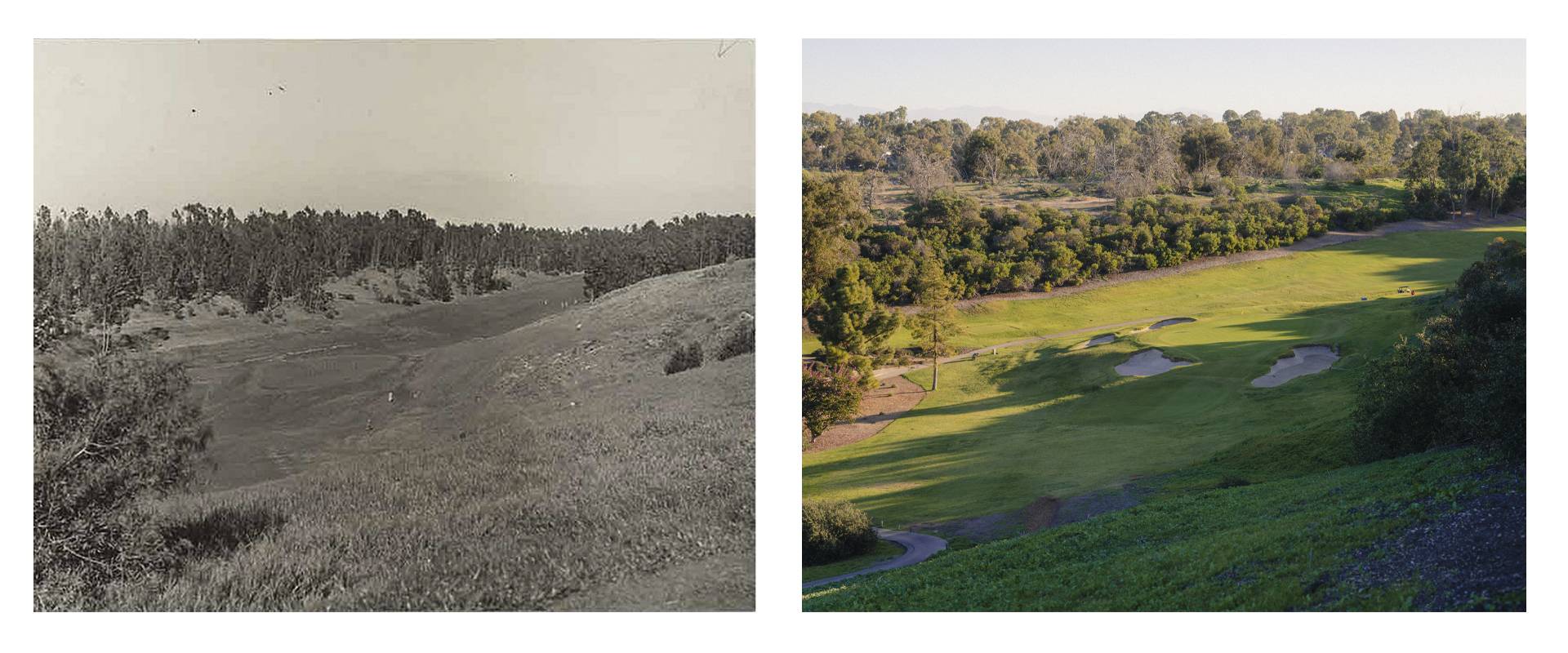
The 13th hole at Palos Verdes. Historical photo courtesy of Tommy Naccarato.
As on the front nine, once you’re down into the canyon, you have to come back out. That’s the job of the (LPGA’s) par-5 14th. This hole is all about the second shot and the decision of whether to go for the green in two. The green slopes severely from back to front, making wedges from the upslope difficult because of the demand for distance and spin control. Players are likely going to want to push it up as close as possible to this green on their second shots.
-
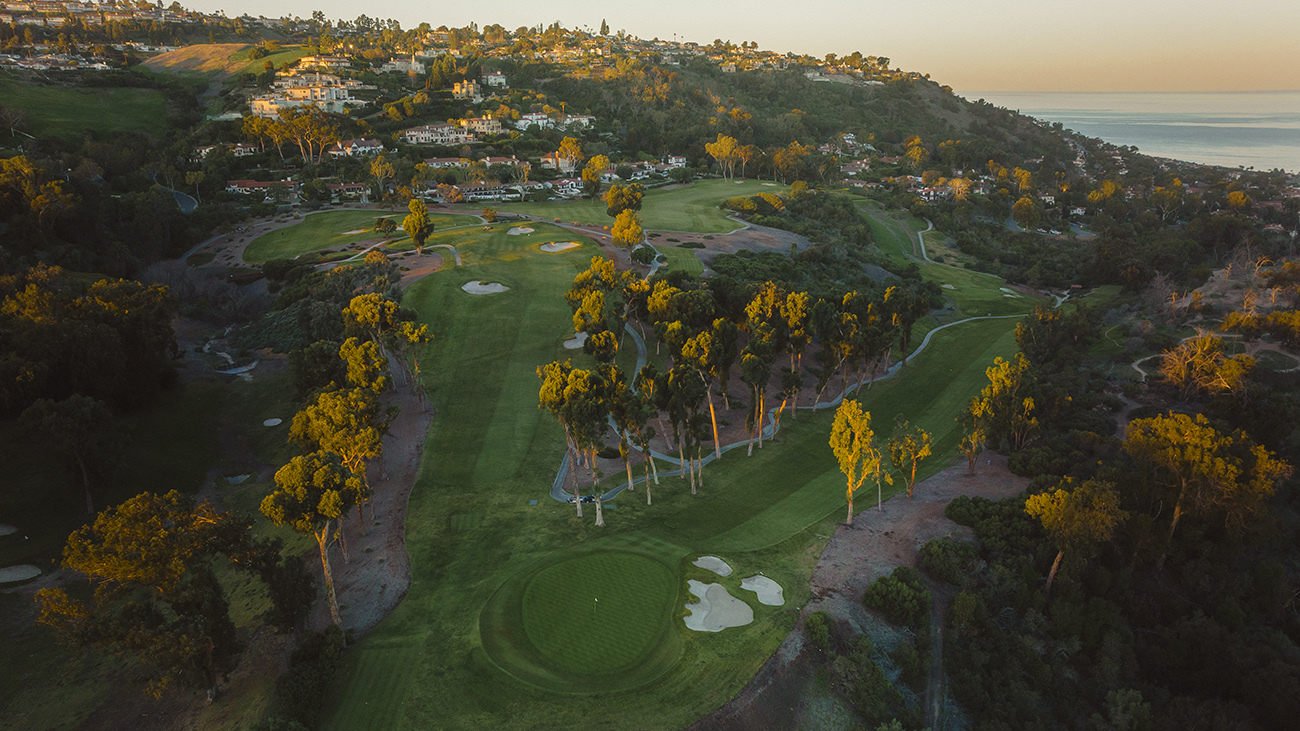
The 14th hole (right) at Palos Verdes. Photo: Andy Johnson
-
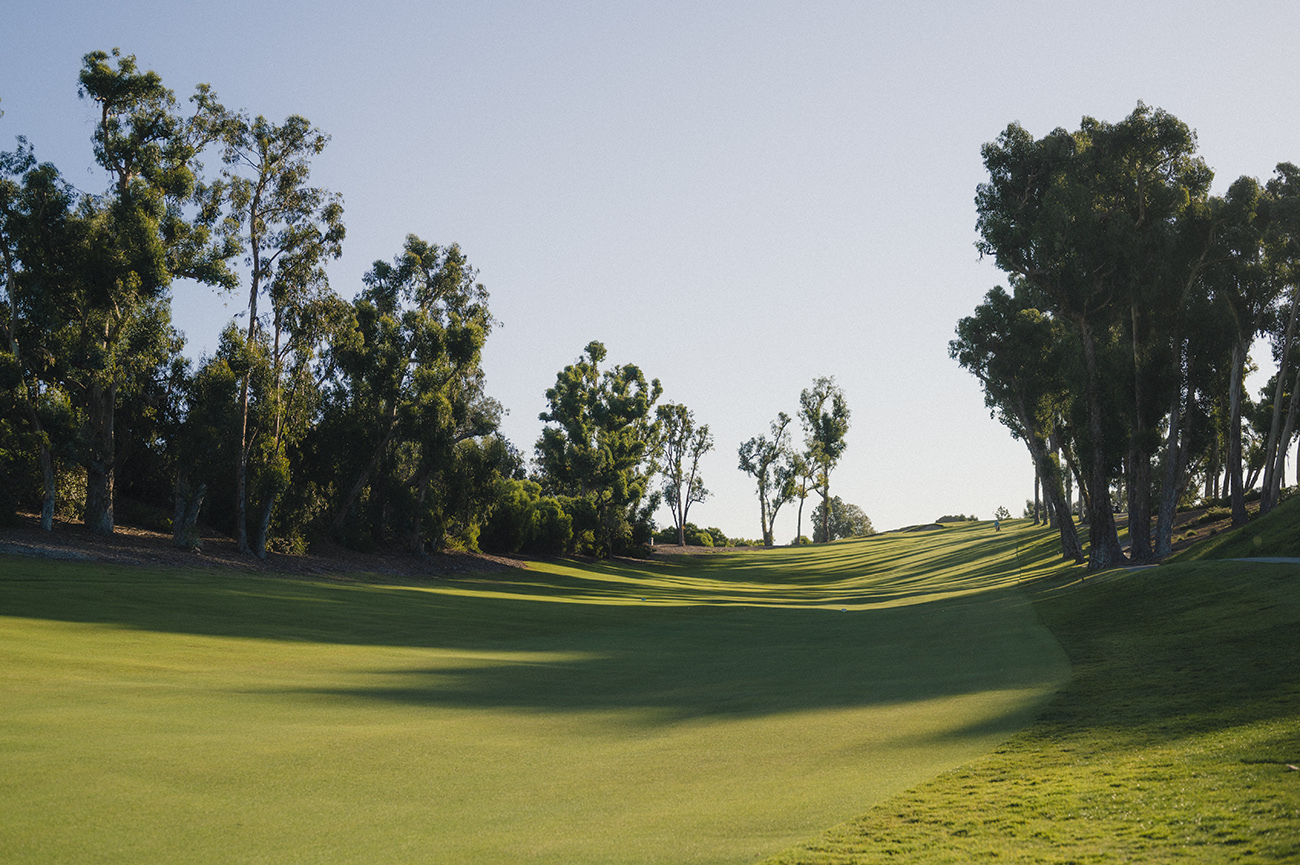
The 14th hole at Palos Verdes. Photo: Cameron Hurdus
-
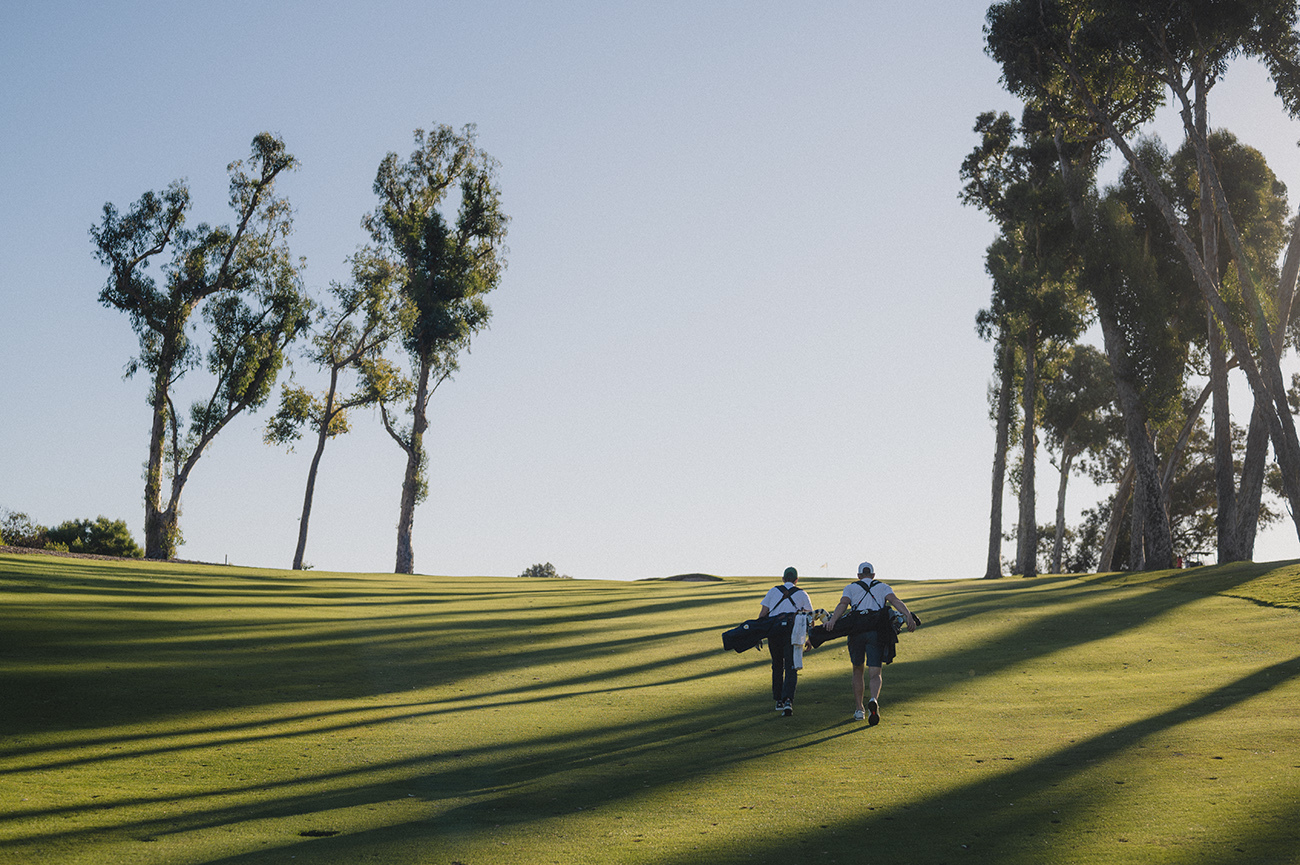
The 14th hole at Palos Verdes. Photo: Cameron Hurdus
Severe land is one of the toughest challenges architects confront. What Bell did well at Palos Verdes was to convert those tricky spots into impactful holes. The fourth and 13th are dramatic, thrilling downhill holes. Coming out of the low points, Bell wisely used par 5s, which play longer than they look on the scorecard because of their uphill nature.
Palos Verdes’s wonderful scenery will get much of the attention this week on the LPGA Tour telecast, but Billy Bell’s expertise in making the severe site a cohesive and walkable 18 holes should also be celebrated.


 by
by 
